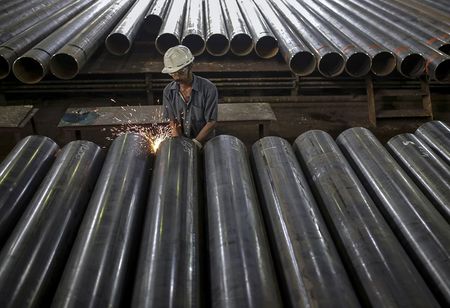The global steel industry is witnessing an unprecedented rally as steel prices continue to increase. A Motilal Oswal report says that regional hot-rolled coil (HRC) steel prices have continued to increase and was at Rs 66,750 per tonne at traders' markets on May but was still at a discount of Rs 15,300 per tonne in comparison to the landed cost of imports from Korea.
According to a Credit Suisse report, China and FTA (free-trade agreement) export HRC prices rose $50 and $10 per tonne, respectively, in the previous week, while Indian mills saw hikes of up to $60 per tonne.
Despite this, native steel prices are still at a 15 percent and 11 percent discount to China and FTA imports respectively. Considering that, there is still huge room for native prices to go up in the coming months.
Rising steel prices are a global phenomenon. The report says that prices in Europe rose by $20 per tonne to a record $1,185 per tonne, while Chinese domestic prices remained flat as of May 6, 2021. Spreads increased $32 per tonne, $121 per tonne, and $48 per tonne MoM in China, Europe, and India, respectively.
China withdrawing from export markets in the medium term is also structurally positive for domestic steel producers. China is to decrease exports from May, as the country has imposed restrictions to help domestic industries.
China's novel export policy puts Indian steelmakers in a sweet spot as they are poised to benefit from the dual tailwinds. Firstly, steel prices are showing promise to upsurge further as they are still at a discount. Then again, restrictions on Chinese exports would open up markets in the US and Europe, where there are signs of an economic recovery.
Domestic market hits a roadblock
The steel segment is looking at a strong prospect of increasing exports but weakening domestic sentiments have emerged as a major concern.
As per the Motilal Oswal report, India's steel consumption declined 26 percent month-on-month to 6.7 million tonnes in April 2021. It is likely to decrease further in May if the pandemic is not contained in time.
As a result of weak demand, imports and production have also taken a hit. India steel imports declined 27 percent MoM to 364kt, while crude steel production declined 21 percent MoM to 8 million tonnes in April.
Amidst this, low inventory levels, which are down 39 percent year-on-year to 8.3 million tonnes, remain a silver lining.
Lack of oxygen supply has also hit steel production. Presently, the oxygen supply is diverted for medical purposes, leaving little room for industrial supply. According to the steel ministry, oxygen stock at steel plants has reduced to just half a day from 3½ days earlier.
Oxygen is critical in various steel production processes like blast furnaces lancing and gas-cutting. Its shortage has badly hit steel production and the industry would be expecting the issue of supply shortage to be restored immediately to upsurge production and make the most of the rising international demand.
